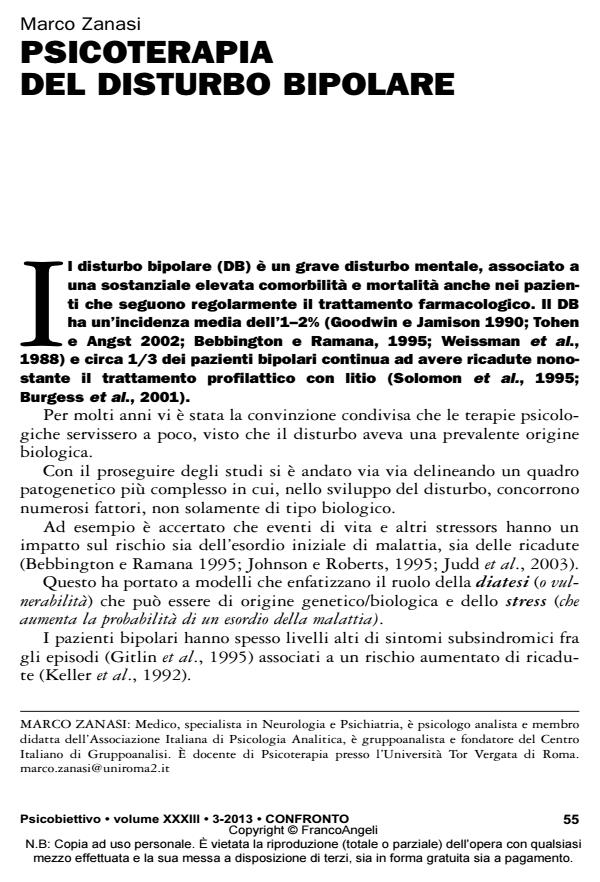Psicoterapia del disturbo bipolare
Titolo Rivista PSICOBIETTIVO
Autori/Curatori Marco Zanasi
Anno di pubblicazione 2014 Fascicolo 2013/3
Lingua Italiano Numero pagine 19 P. 55-73 Dimensione file 147 KB
DOI 10.3280/PSOB2013-003004
Il DOI è il codice a barre della proprietà intellettuale: per saperne di più
clicca qui
Qui sotto puoi vedere in anteprima la prima pagina di questo articolo.
Se questo articolo ti interessa, lo puoi acquistare (e scaricare in formato pdf) seguendo le facili indicazioni per acquistare il download credit. Acquista Download Credits per scaricare questo Articolo in formato PDF

FrancoAngeli è membro della Publishers International Linking Association, Inc (PILA)associazione indipendente e non profit per facilitare (attraverso i servizi tecnologici implementati da CrossRef.org) l’accesso degli studiosi ai contenuti digitali nelle pubblicazioni professionali e scientifiche
L’autore, dopo una disamina delle ultime ricerche sulle alterazioni cognitive causate dal disturbo bipolare, fino a poco tempo fa del tutto sottovalutate, espone una rassegna dei vari approcci psicoterapeutici nel trattamento di tale diffusa patologia. Di ciascun metodo vengono presentati, in modo esaustivo, seppure sintetico, le basi teoriche, le modalità d intervento, i punti di forza e i criteri di esclusione. Un’ampia bibliografia permette al lettore di approfondire gli argomenti presentati. L’autore, sulla base dei dati esposti, conclude per l’indiscutibile utilità delle varie forme di psicoterapia in aggiunta alla farmacoterapia nel trattamento di tutte le sindromi bipolari, in qualsiasi fase esse si manifestino. Parole chiave: disturbo bipolare; psicoterapia; disturbi cognitivi; modalità di intervento.
Parole chiave:Disturbo bipolare; psicoterapia; disturbi cognitivi; modalità di intervento.
Marco Zanasi, Psicoterapia del disturbo bipolare in "PSICOBIETTIVO" 3/2013, pp 55-73, DOI: 10.3280/PSOB2013-003004